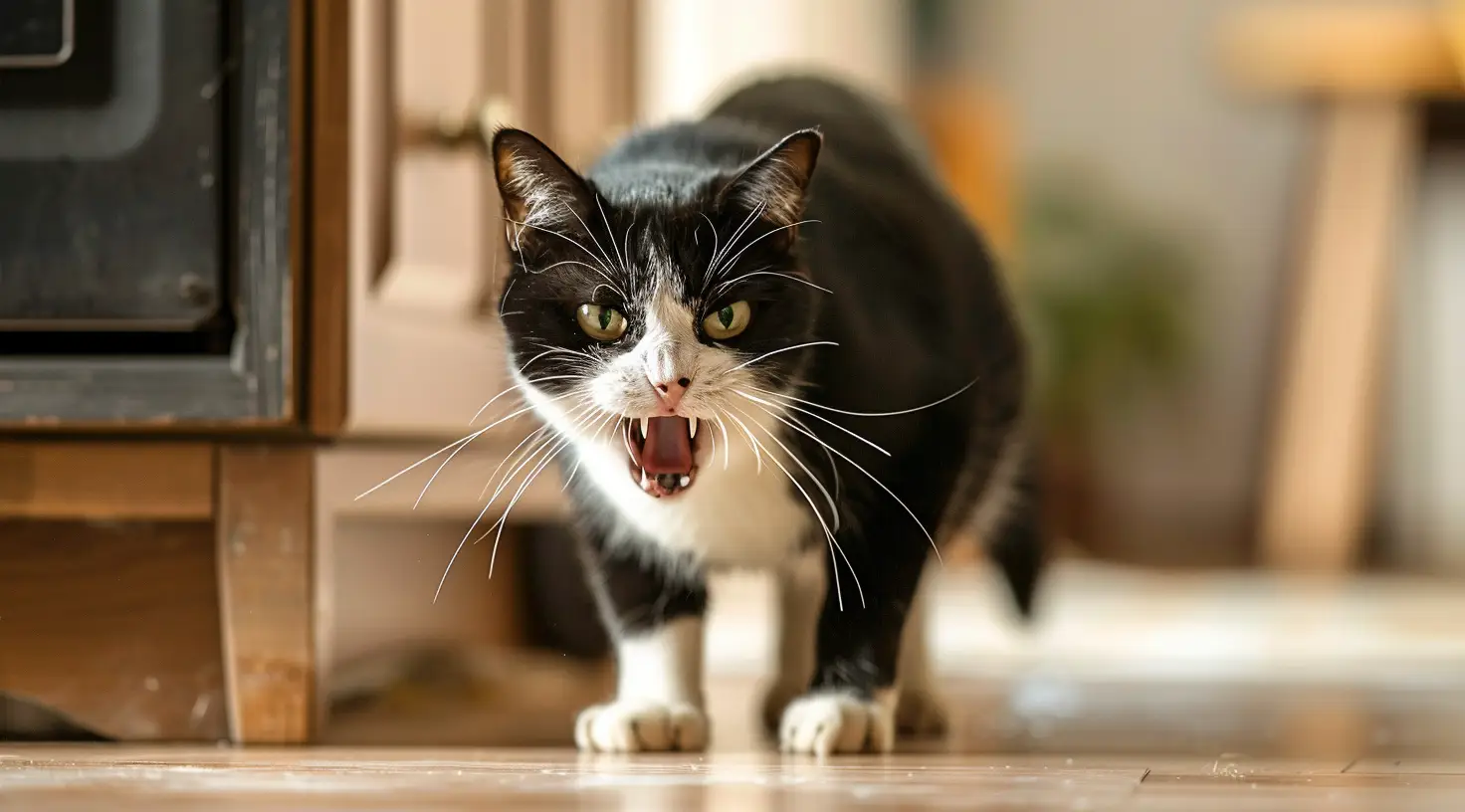Why Do Cats Hiss at Each Other?

PHOTO: Yueke
You might think that a cat hissing is a sign of hostility or hatred, but it’s actually a normal way for cats to express fear. The most common reason for a cat to hiss is when two unneutered male cats, or an unneutered male and an unneutered female, come into conflict while searching for potential mates.
Hissing is a common behavior in cats that sounds similar to the hiss of a snake or a deflating tire. Ethologists believe that cats have developed this hissing sound as an evolutionary survival technique by mimicking the hisses of snakes. When a cat hisses, it suddenly expels a burst of air from its mouth, producing the characteristic hissing sound. If you are close enough to the cat’s face, you might actually feel the air rushing out as it hisses. The nature of the hiss can vary depending on the situation. The sound can range from a silent, open-mouthed hiss (which serves as a visual sign of displeasure) to a more aggressive, forceful hiss (a full expulsion of air). Common behaviors associated with hissing include: - Mouth open with the tongue curled - Ears flattened - Arched back - Raised fur (also known as piloerection)
Hissing is almost always a signal that a cat is feeling mistreated, annoyed, unsafe, uncomfortable, threatened, or stressed. A common misconception is that a hissing cat is teasing or mocking other cats, dogs, or people. In reality, hissing is usually a cat's way of trying to avoid physical confrontation. In feline interactions, cats that frequently hiss are often victims or are being chased or provoked. Common situations in which cats hiss at each other include: - A mother cat with a litter of kittens may hiss, growl, chase, swat at, or attempt to bite another cat approaching her, even if it was previously a friendly cat. - Two unneutered male cats or an unneutered male and a female cat may hiss at each other while seeking mates. - Cats are territorial and will hiss at other cats to establish dominance, particularly when a new cat enters their territory. - Cats that have been to the vet and are returning home often experience bullying and hissing from resident cats. Cats communicate through visual signals, sounds, and scents. - Cats may hiss to deflect aggression or when they anticipate pain.
